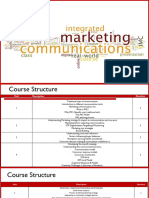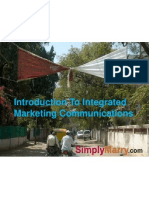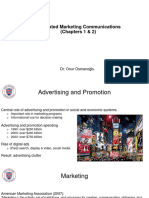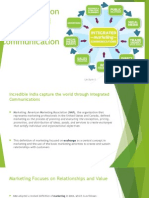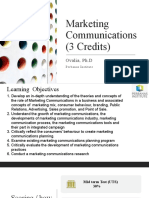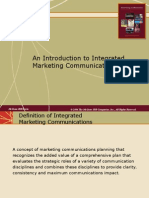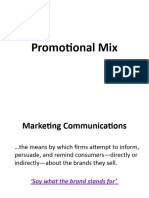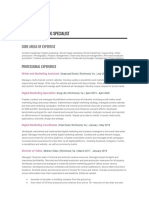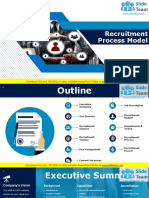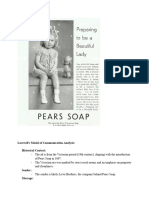0% found this document useful (0 votes)
16 views27 pagesChapter 1 Overview
The document discusses the concept and role of communication in international business, emphasizing Integrated Marketing Communications (IMC) as a strategy that integrates various promotional elements for maximum impact. It highlights the evolution of communication in the digital age, the importance of adapting to changing consumer behaviors, and the use of diverse communication tools. Additionally, it outlines the distinction between personal and non-personal communication channels, underscoring the significance of audience engagement in modern marketing.
Uploaded by
k61.2214530007Copyright
© © All Rights Reserved
We take content rights seriously. If you suspect this is your content, claim it here.
Available Formats
Download as PDF, TXT or read online on Scribd
0% found this document useful (0 votes)
16 views27 pagesChapter 1 Overview
The document discusses the concept and role of communication in international business, emphasizing Integrated Marketing Communications (IMC) as a strategy that integrates various promotional elements for maximum impact. It highlights the evolution of communication in the digital age, the importance of adapting to changing consumer behaviors, and the use of diverse communication tools. Additionally, it outlines the distinction between personal and non-personal communication channels, underscoring the significance of audience engagement in modern marketing.
Uploaded by
k61.2214530007Copyright
© © All Rights Reserved
We take content rights seriously. If you suspect this is your content, claim it here.
Available Formats
Download as PDF, TXT or read online on Scribd
/ 27




